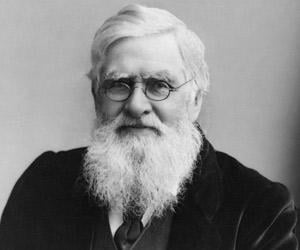

Around this time he was reading books of scientific exploration like those by Von Humboldt and especially the 1848 account of a trip to the Amazon by American entomologist William Edwards seminal scientific books of the day that challenged the prevailing natural theology including the pioneering work of geologist Charles Lyell in his Principles of Geology (1830-1833) which extending geological history beyond the few thousand years suggested by Christian belief, Charles Darwin’s The Voyage of the Beagle (1839) with its fascinating story of natural history as biogeography, Robert Chambers’ evolutionary treatise Vestiges of the Natural History of Creation (1844) which included ideas of stellar evolution and transmutation of species. When William died in 1845 Alfred took over the business in Neath one commission being a design for the Neath Mechanics Institute where he was encouraged to give talks on engineering and natural history.

Under the influence of entomologist Henry Bates began building up a collection of insects. When the business crumbled Alfred took a position as schoolmaster teaching surveying at the Collegiate School in Leicester from 1844-1845 where, in his spare time he spent time reading in the Leicester library devouring the works of Malthus, Humboldt, Darwin, Lyell and Chambers and developing his other interests in natural history. Soon he became an apprentice travelling surveyor to his elder brother William for six years developing an interest in natural history when the pair moved to Neath in 1841. In London he quelled his natural curiosity reading books available in the London Mechanics Institute which acted as educational institutions for the working class but often associated with political disenchantment, in Alfred’s day this being the radical ideas of social reformers Robert Owen and Thomas Paine. Later in life he would regard himself as self-taught in natural history. Though educated in law his father fell on hard times and when Alfred was five the family moved to his mother’s English home in the county of Hertford, attending Hale Grammar School until he was 14 when declining family finances meant a return home, and before long he was forced to board in London with his brother John, an apprentice builder. Wallace was born in the small Welsh village of Llanbadoc, Monmouthshire as eighth of nine children in a Wallace family that claimed a relationship to William Wallace a leader in the thirteenth century Scottish Wars of Independence.


 0 kommentar(er)
0 kommentar(er)
